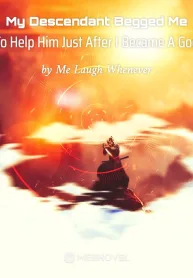Volume 1 - CH 13
Chapter 0013 Close Combat Initiative
Translator: Tseirp
“Failure is the mother of success.”
Ryo would not be discouraged from failure.
“For now, I’ll put aside the creation of the paddy field.”
Right, he just had to postpone any problems without feeling discouraged so it was fine!
In the fight with the Kite Snake, he could not stand his ground in close combat at all.
To be accurate, it was the close combat with the Kite Snake’s tail.
In other words, Ryo found it hard to defend against or avoid his opponent’s attacks. Well, he hated doing that so he made it such that he could safely hunt from a distance so it could be said that the outcome in close combat was expected.
Until now, he had been training the means to attack from a distance.
Training regarding his activation time, magic control, and such, there were still many things to do.
“In the first place, generating <Ice Wall 5 layers> took one second and there was only one reason why I received damage. I just have to generate it even quicker!”
And also <Ice Armor>.
Ryo somewhat prepared it as a defensive spell with a suitable armor in mind but it was quite effective. Or rather, without it, Ryo would be dead.
“Although it makes me look like some Saint Knight, it isn’t hard to carry around and I should train to immediately equip it directly before battle for unforeseen circumstances. Ah, I could increase the weight of it and wear it when running. It might be good training.”
He failed to realize that his thought process had completely detoured to a muscle brain route.
That said, it would train his stamina and having that base endurance would aid to not run out of stamina during battle.
No matter how excellent he trains his technique, he would not be able to utilize it without stamina.
Along with his daily calisthenics training and running, Ryo would perform practice swings without fail.
The bamboo blade about one meter long and weight-adjusted with an ice coating.
Originally a bamboo sword is made of four pieces of bamboo split into eight pieces but Ryo was using the bamboo in its original form.
He just looked for bamboo that was a comfortable size to grip and cut it about one meter long.
Of course, it didn’t have a wrist guard but he had held a bamboo sword for nine years. His body remembered the rough length of the handle.
Regardless of Kendo or Swordsmanship, bamboo sword, or Japanese katana, the grip was the same.
The left hand would grip close to the end of the handle while the right hand would grip close to the wrist guard.
Both fists would not stick to each other.
There would be space for another fist between the two fists.
It was fundamentally different from holding a baseball bat.
The usage was different.
The difference was that, for a bat, it is important to transmit power to the bat, whereas for a bamboo sword or katana, control was more important.
Because of that, the length of the handle was always eight cun or 24 cm, regardless if it is for the uchigatana or the longer tachi.
It is believed that this was because it has long been recognized that the length was just right for swinging a sword.
Incidentally, the so-called ‘two-handed sword’ in the West was gripped and swung by having both fists stuck together. Just like a baseball bat.
If power was the focus, stick both fists together, and if control was important, separate both fists.
As mentioned earlier, isn’t it the same for baseball bats?
When swung normally, both fists would be stuck together to convey more power.
However, if there was a need to move the bat more precisely, that is, when they want to perform a bunt, they would have both fists apart and have one fist in the middle of the bat.
How the target is moving and how to use the item held was determined from the stage of holding the item.
Fundamentally, the bamboo sword or the Japanese katana were held and supported with the left hand.
The right hand is just lightly holding it … or not entirely, the right hand also determines the trajectory of the blade.
For the left hand, the little finger and ring finger were important for ‘grasping’, similar to how it is in baseball, but they were fingers that are rarely used in daily life.
For that reason, repeated practice was important.
After swinging practice, head, wrist-head, torso and thrust. (TLN: These are kendo moves)
He retraced the movements he learned in the dojo many times.
Grip loosely with the left hand except for the two fingers and squeeze only at the moment of impact.
As with boxing jabs, you won’t be able to speed up if you’re always using all your strength.
Therefore, only swing your arms loosely without putting too much strength and grip your fist only at the moment of impact.
In the end, as it is related to the movement of the body … there were many things in common for various actions.
Not only in the handling of bamboo swords and bats, but also in judo and sumo, the little finger and ring finger play the most important role after catching the opponent.
It is the same in all Japanese martial arts, Chinese martial arts, hand-to-hand martial arts, it is normally relaxed and grasp only at the moment of impact.
By repetitive practice, it is best if you can do it until it is imprinted in the cerebellum as motor memory, not in the cerebrum as a conscious action.
And that is what many people on Earth achieved, whether they are martial artists or athletes.
That was sure to be the same in 『Phi』 as well.
Translator: Tseirp
“Failure is the mother of success.”
Ryo would not be discouraged from failure.
“For now, I’ll put aside the creation of the paddy field.”
Right, he just had to postpone any problems without feeling discouraged so it was fine!
In the fight with the Kite Snake, he could not stand his ground in close combat at all.
To be accurate, it was the close combat with the Kite Snake’s tail.
In other words, Ryo found it hard to defend against or avoid his opponent’s attacks. Well, he hated doing that so he made it such that he could safely hunt from a distance so it could be said that the outcome in close combat was expected.
Until now, he had been training the means to attack from a distance.
Training regarding his activation time, magic control, and such, there were still many things to do.
“In the first place, generating <Ice Wall 5 layers> took one second and there was only one reason why I received damage. I just have to generate it even quicker!”
And also <Ice Armor>.
Ryo somewhat prepared it as a defensive spell with a suitable armor in mind but it was quite effective. Or rather, without it, Ryo would be dead.
“Although it makes me look like some Saint Knight, it isn’t hard to carry around and I should train to immediately equip it directly before battle for unforeseen circumstances. Ah, I could increase the weight of it and wear it when running. It might be good training.”
He failed to realize that his thought process had completely detoured to a muscle brain route.
That said, it would train his stamina and having that base endurance would aid to not run out of stamina during battle.
No matter how excellent he trains his technique, he would not be able to utilize it without stamina.
Along with his daily calisthenics training and running, Ryo would perform practice swings without fail.
The bamboo blade about one meter long and weight-adjusted with an ice coating.
Originally a bamboo sword is made of four pieces of bamboo split into eight pieces but Ryo was using the bamboo in its original form.
He just looked for bamboo that was a comfortable size to grip and cut it about one meter long.
Of course, it didn’t have a wrist guard but he had held a bamboo sword for nine years. His body remembered the rough length of the handle.
Regardless of Kendo or Swordsmanship, bamboo sword, or Japanese katana, the grip was the same.
The left hand would grip close to the end of the handle while the right hand would grip close to the wrist guard.
Both fists would not stick to each other.
There would be space for another fist between the two fists.
It was fundamentally different from holding a baseball bat.
The usage was different.
The difference was that, for a bat, it is important to transmit power to the bat, whereas for a bamboo sword or katana, control was more important.
Because of that, the length of the handle was always eight cun or 24 cm, regardless if it is for the uchigatana or the longer tachi.
It is believed that this was because it has long been recognized that the length was just right for swinging a sword.
Incidentally, the so-called ‘two-handed sword’ in the West was gripped and swung by having both fists stuck together. Just like a baseball bat.
If power was the focus, stick both fists together, and if control was important, separate both fists.
As mentioned earlier, isn’t it the same for baseball bats?
When swung normally, both fists would be stuck together to convey more power.
However, if there was a need to move the bat more precisely, that is, when they want to perform a bunt, they would have both fists apart and have one fist in the middle of the bat.
How the target is moving and how to use the item held was determined from the stage of holding the item.
Fundamentally, the bamboo sword or the Japanese katana were held and supported with the left hand.
The right hand is just lightly holding it … or not entirely, the right hand also determines the trajectory of the blade.
For the left hand, the little finger and ring finger were important for ‘grasping’, similar to how it is in baseball, but they were fingers that are rarely used in daily life.
For that reason, repeated practice was important.
After swinging practice, head, wrist-head, torso and thrust. (TLN: These are kendo moves)
He retraced the movements he learned in the dojo many times.
Grip loosely with the left hand except for the two fingers and squeeze only at the moment of impact.
As with boxing jabs, you won’t be able to speed up if you’re always using all your strength.
Therefore, only swing your arms loosely without putting too much strength and grip your fist only at the moment of impact.
In the end, as it is related to the movement of the body … there were many things in common for various actions.
Not only in the handling of bamboo swords and bats, but also in judo and sumo, the little finger and ring finger play the most important role after catching the opponent.
It is the same in all Japanese martial arts, Chinese martial arts, hand-to-hand martial arts, it is normally relaxed and grasp only at the moment of impact.
By repetitive practice, it is best if you can do it until it is imprinted in the cerebellum as motor memory, not in the cerebrum as a conscious action.
And that is what many people on Earth achieved, whether they are martial artists or athletes.
That was sure to be the same in 『Phi』 as well.







